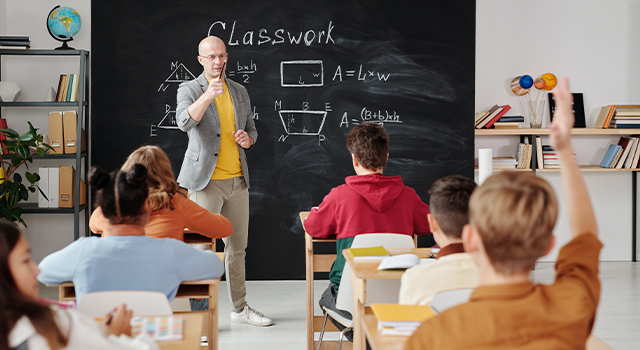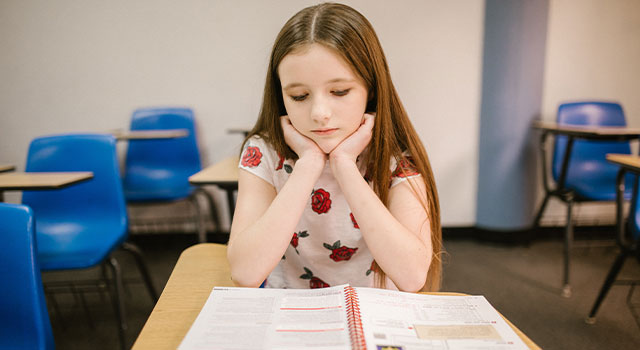
Vision Therapy for Dyslexia, ADD/ADHD, & Learning Disabilities
All too often, it is an undiagnosed vision problem that’s at the root of the struggle to focus at a distance (such as the board), maintain concentration, or skip lines while reading. This can result in frustration and boredom and can be responsible or an overlooked component of a child’s diagnosis with ADD/ADHD, dylexia or a learning disability.
If your child displays poor attention in school, don’t automatically assume that it’s a learning disability, Attention Deficit Disorder (ADD) or Attention Deficit Hyperactivity Disorder (ADHD). By undergoing a thorough eye evaluation, also known as a functional eye exam, Dr. Anderson and Dr. Holodniak may conclude that the issue isn’t, in fact, ADHD, but rather a functional vision problem, which can be corrected with a highly effective vision therapy program.
Good Eyesight Is Not the Same as Having Good Vision
Your child may pass the vision screening exam with flying colors or get corrective lenses, yet continue to struggle to see the board or read from a book. A basic eye exam doesn’t check how well the eyes work together as a team, how quickly the eyes focus when moving from one visual plane to another, or how smoothly the eyes move across the page when reading.
The only way to ensure that all the essential visual skills are working correctly is by undergoing a functional vision exam.
Vision Problems In Any of the Following Areas Can Significantly Impact Learning
- Eye tracking skills – eyes following a line of print
- Eye teaming skills – two eyes working together as a synchronized team
- Binocular vision – simultaneously blending the images from both eyes into one image
- Accommodation – eye focusing
- Visual-motor integration – eye-hand coordination
- Visual perception – visual memory, visual form perception and visualization
Any of these can lead a child to struggle to make sense of the information taken in through his or her eyes. Visual processing issues, such as dyslexia, can cause your child to experience difficulties when reading, leading them to confuse words and word-order. This makes bright children seem like they perpetually can’t grasp the subject at hand, which, in turn, can result in secondary behavioral issues.
Is it a Learning Disabilities, ADHD or a Vision Problem?
Is it Really a Learning Difficulty?
80% of learning is related to a child’s visual capabilities. Vision problems, such as blurry vision, headaches from eye strain or eyes nor performing adequately will cause a child to struggle with reading, writing and homework assignments — similar to what a child with a learning difficulty would experience.
Is it Really ADHD?
Kids with functional vision problems can produce a similar set of symptoms to those found in ADHD. Because they struggle to make sense of information taken in through their eyes, they may have trouble focusing at school, fidget or squirm in their seats and make careless mistakes. The frustration can even lead them to act out and disrupt the classroom.
How Can Vision Therapy Help My Child?
 Vision therapy is an individually-tailored regimen of evidence-based eye exercises created to improve and strengthen visual functions and retrain the brain to interpret visual input more accurately. It’s often compared to [physical therapy], but for the eyes.
Vision therapy is an individually-tailored regimen of evidence-based eye exercises created to improve and strengthen visual functions and retrain the brain to interpret visual input more accurately. It’s often compared to [physical therapy], but for the eyes.
Vision therapy exercises improve:
- Lazy eye
- Eye teaming
- Focusing
- Hand-eye coordination
- Visual perception
- Visual tracking
If your 4th-grade daughter isn’t seeing the board clearly in school, her vision therapy could include lenses and prisms. The doctor may have her look through different kinds of lenses or special prisms held at different angles. This will teach her eyes to better focus on images or objects at various distances.
Your 3rd grader is intuitive and intelligent. Only now, she’s expected to read more challenging books and do more complex schoolwork. This becomes a struggle as she cannot make sense of the words on the page. That’s where vision therapy can help.
How Long Will It Take To See Results With Vision Therapy?
Some gains can be seen within a few weeks, but it can take up to 6 months to realize significant results. Naturally, this depends on each patient, their unique therapy regimen and their compliance to the program. Vision therapy includes in-office and home exercises, visual aids, or eyeglasses and involves close monitoring and follow-up appointments. Over the course of the program, Dr. Anderson and Dr. Holodniak will decide how many visits are needed to achieve optimal results.
Do you think your child’s learning disability or ADHD-like symptoms may be the result of a vision problem? Schedule a functional vision evaluation with Grand Developmental Vision Institute to find out. If it is determined by Dr. Anderson and Dr. Holodniak that the issue, in fact, vision-related, a customized vision therapy program will be provided.
Our practice serves patients from Winnipeg, Selkirk, Portage La Prairie, and Brandon, Manitoba and surrounding communities.





